Honda W/S 250-305 TWINS C/CS/C
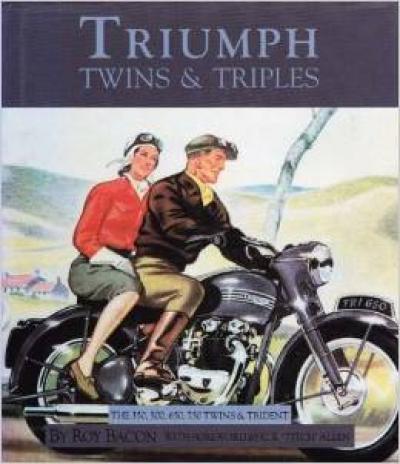
This book is essential reading for every Triumph owner, rider, restorer or just admirer. It deals with the much loved Triumph twin, plus the fabulous trident, from its inception to the final days at Meriden and includes many photographs plus invaluable tables of machine data and specifications.
It covers the Bonnevilles, Thunderbirds, Daytonas and Tigers, along with the more prosaic from which they sprung.
Laverda 500 Twins 77 – 83
Harley-Davidson Big Twins
H/T Restore Harley Big Twins
Ducati Desmo Twins Buy Gd
Ducati Bevel Twins 1971 to 198
Ducati Bevel Twins Buy Gd
Factory-Original Triumph Twins
Triumph 350 & 500 Unit Twins Bu
Moto Guzzi 2-valve big twins Bu

While BMW motorcycles remain mostly associated with its R-series shaft-drive boxer twins, it’s the K-series liquid-cooled ‘multis’ that have been – and remain – the German firm’s most advanced, radical and downright wacky bikes of all. Launched in 1983 to propel BMW into a whole new era, the K-series has included some of the world’s most innovative and interesting motorcycles. From the original liquid-cooled, fuel-injected K100, to the radically aerodynamic K1 of the 1980s; the ultra-powerful K1200RS and space age K1200LT of the 1990s; and the ‘Duolever’ K1200S and 6-cylinder K1600 of the 2000s and beyond, BMW’s ‘Ks’ have always been special, but also so advanced and pioneering that they’ve helped shape the whole of modern motorcycling. BMW expert Phil West, author of BMW Airhead Twins and BMW GS, also published by Crowood, has again painstakingly researched their complete history, found pictures never published before and recounts the whole K-Series story in a comprehensive and engaging tale.

Celebrate more than 100 years of Germany’s best two- and four-wheeled rides. This handsome volume is filled with images, history, and in-depth review of the incredible machines BMW has created year after year.
Established in 1916, BMW is one of the automotive and motorcycle industry’s oldest and most-respected manufacturers. Over the past 100-plus years, the company has passed through myriad incarnations. The BMW Century chronicles this remarkable transportation story through the cars and motorcycles manufactured, from the 1923 R32 motorcycle to today’s sleek electric, hybrid, and high-performance cars.
The BMW Century showcases how the company’s visionary team systematically rebuilt BMW in the post-World War II years into the spectacular success we know today—a company with sales in excess of two million cars annually, led by its top-selling 3-series.
BMW’s motorcycle division is no less legendary. It began with the 1923 avant-garde R32, which featured a 180-degree, horizontally opposed twin, the engine configuration that would become BMW’s hallmark. Over the decades, BMW used that configuration to power groundbreaking machines like the R90S, R100RS, and R80GS. Beginning in 1983, the company added add three- and four-cylinder machines to their offerings, culminating in today’s spectacular S1000RR sport bike.
From the pre-war motorcycles to the iconic R-series twins of the 1970s and ’80s to the mighty M-cars and superbikes of today, The BMW Century offers a full review of German engineering at its zenith. The book is illustrated generously with hundreds of historic, contemporary, and racing photographs—many sourced from BMW’s historic archives—and thorough text covering BMW’s full history.
This is the one volume no BMW aficionado will want to be without.
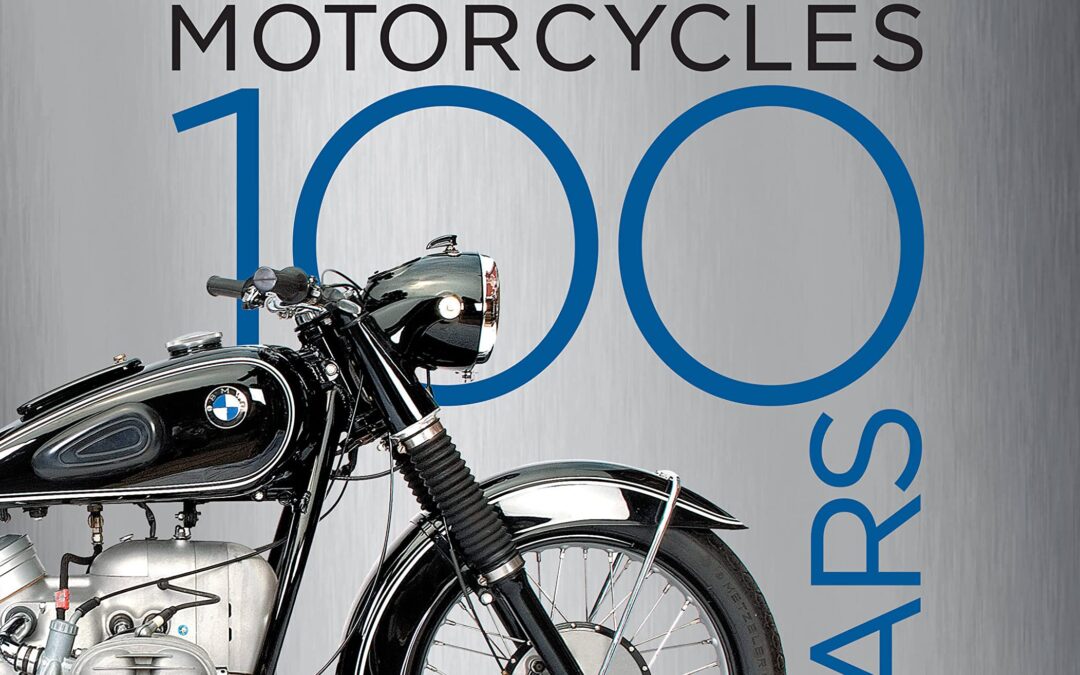
BMW Motorcycles: 100 Years celebrates the legendary machines built by Germany’s leading motorcycle manufacturer.
BMW’s long history of evolving technology is highlighted in this detailed story beginning with side-valve machines in the 1920s and early overhead-valve performance bikes, then moving to the postwar R-series Airhead and modern Oilhead twins, followed by four-cylinder and six-cylinder K-series touring bikes, the latest parallel twins, and inline-four cylinder sport bikes. From the first R32 that launched BMW’s motorcycle dynasty, to the latest S1000RR superbike and R18 mega-cruiser, BMW Motorcycles captures a century of motorcycling excellence in a combination of historic and contemporary photos sourced from BMW’s archive.
The stories behind all the classic and modern BMWs are here:
- 1920s and 1930s BMWs like the R5 that defined performance in the prewar era
- The military R12 that supported the Wehrmacht as it battled its way across Europe in World War II
- The 1960s R69S that offered an excellent platform for both touring and sporting riding
- The R90S café racer and the R100RS, the latter arguably the world’s first dedicated sports tourer
- The astounding K1 “flying brick”
- The GS (Gelände Sport) series that launched the adventure-bike revolution
- Today’s R18, R nine T, and the world-class S100RR superbike
This is a once-in-100-years story captured in a beautiful book sure to be enjoyed by any BMW Fan.

An intimate insight into a racing life
Mike Hailwood is a legend. Arguably the world’s greatest ever motorcycle racer, he transcended eras and generations. His two-wheeled racing career began – and he initially made his name – aboard big, British single cylinder machines, then he took to Japanese and Italian four-stroke multis, before finishing on booming V-twins and two-strokes.
He went from the black-and-white era, from one-colour dark leathers and pudding basin crash helmets, to the multicoloured, full-face helmeted, sponsorship driven days of the late 1970s. He found time to do some car racing too, recording a third at Le Mans in 1969 driving a Ford GT40, winning the 1972 Formula 2 European Championship and competing in 50 F1 Grands Prix, his debut in 1963, his last in 1974.
Though the car stats are impressive, the motorcycle ones are astonishing – nine world championships, 76 GP wins, 14 TT victories, his TT victories separated by 18 years, the first 1961, the last 1979. On top of this he was awarded the MBE and then the George Medal for his bravery in rescuing fellow F1 driver Clay Regazzoni in 1973.
It is almost impossible to comprehend the tragic irony that the life of this man, who had risked and survived so much, a hero to thousands for his derring-do, was curtailed as he drove the family car to collect a fish and chip takeaway. That his daughter Michelle died alongside him adds an extra layer to the tragedy.
Mike’s son David survived the accident and here has allowed access to the family’s treasure trove of personal artefacts. These range from the mundane to the magnificent but together they tell the incredible story of Mike the Bike.
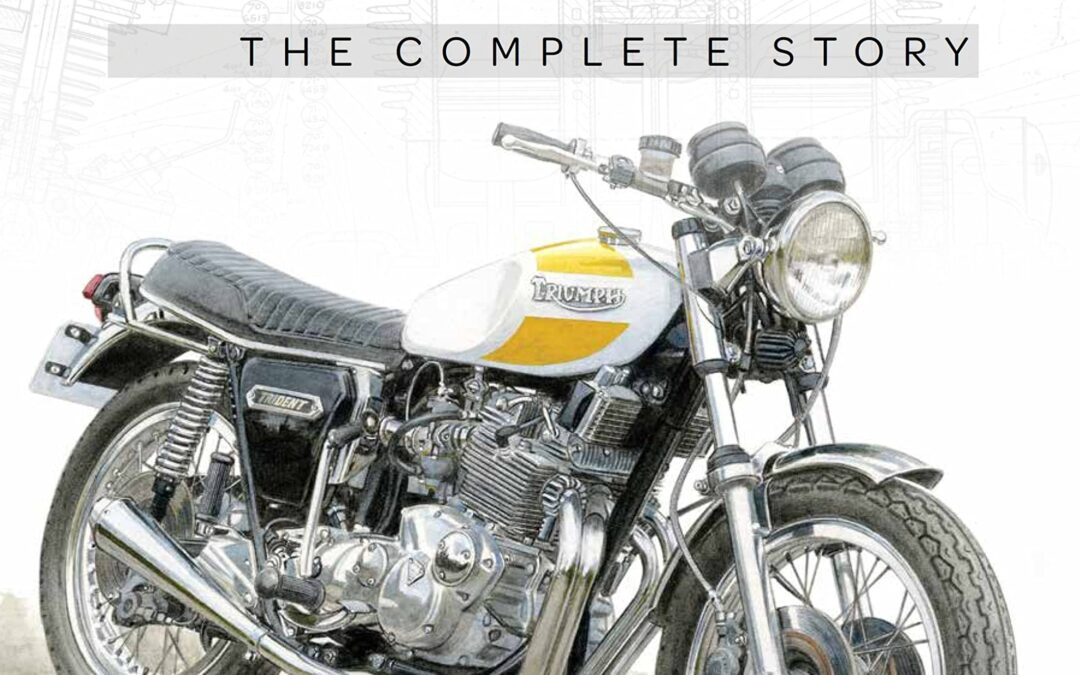
This story is like something out of Hollywood.
In the mid-1960s BSA/Triumph learns that Honda is to launch a 750cc motorcycle that will clearly outclass its 650cc twins. Luckily, Meriden’s top two designers – Bert Hopwood and Doug Hele – have been toying with the idea of a 3-cylinder 750. Could it work? The prototype is fast and intoxicating to ride, but delays mean the Triumph Trident and BSA Rocket 3 have only been on the market a few weeks when the smoother Honda 750 comes along.
The British bikes might be fast, but they lack sophistication and no one loves their oddball styling. Sales are so slow that production is suspended for eight months. BSA/Triumph fights back with a factory race team that sweeps all before it in 1971, including a 1–2–3 at the Daytona 200. And while BSA collapses, Triumph struggles on, launching the factory custom Hurricane and updating the T150 Trident with a 5-speed gearbox and front disc brake.
The Meriden factory sit-in stops Trident production, but a few months later bikes are rolling off the line at Small Heath and the electric-start T160 is launched. To no avail – the odds are against them and in early 1975 Trident production finally stops.
But just as in Hollywood, that’s not the end of the story. Les Williams and Norman Hyde keep the Trident flag flying through the 1980s and beyond. The Trident and Rocket 3 Owners’ Club is formed, bringing together enthusiasts for the iconic triples. And in 1992 (and again in 2020) the reborn Triumph company launches 3-cylinder bikes that carry on the Trident name.
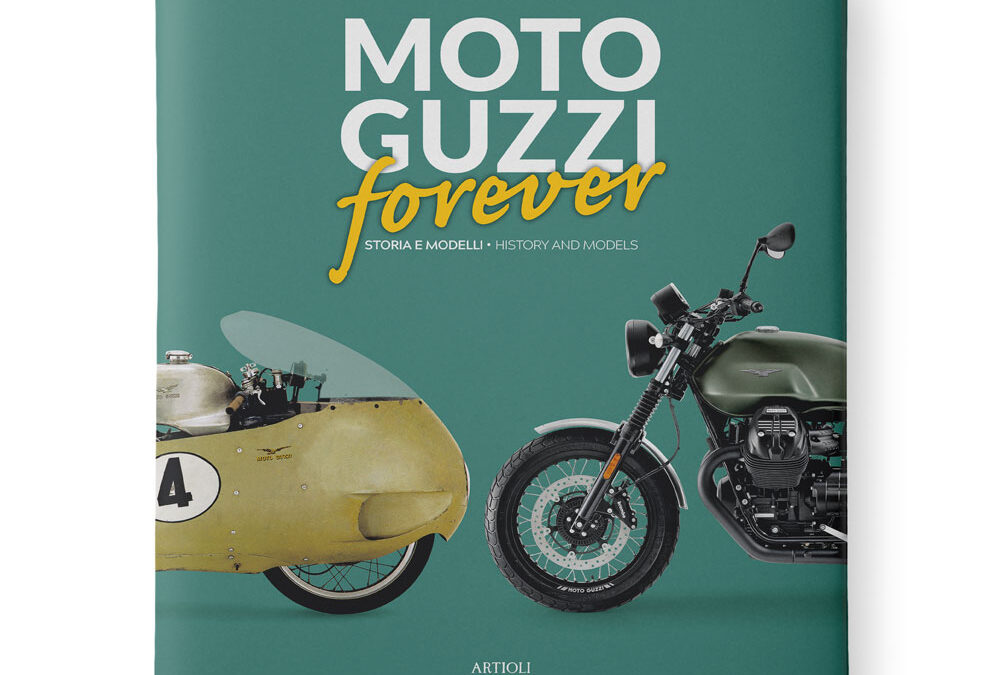
Perhaps only the most diehard fans, among the many Moto Guzzi enthusiasts, are aware of the technical affinity between the single-cylinder engine of the racing ‘250’ from the Mandello company and the V12 unit of the first Ferraris. It’s a surprising connection that is explained by the fact that the technician Gioachino Colombo was a keen admirer of the engine that Carlo Guzzi had designed for the racing bike, at the top in GPs with the names of ‘Albatros’ and ‘Gambalunghino’. In the years following the end of the war, Colombo designed the engine of the first Ferrari by considering the concepts of Mandello: overhead camshaft distribution, with rocker arms and needle valve springs, bore and stroke measurements, the same between their values or with minimal differences. Thus, the first V12 from Maranello to arrive at the fateful 3000 cc limit was a Guzzi multiplied by 12: the same bore and stroke (68×68 mm) and obviously identical unit displacement: 246.8 cc.
It is one of the many curious anecdotes contained in this book that accompanies the story of the events that have characterized the chronology of the brand (five important corporate changes, from the initial union between Carlo Guzzi and the Parodi family from Genoa, up to its entry into the Colaninno Group), to the description of all the models produced by the legendary of Mandello del Lario workshops, for road and racing.
A typically Italian phenomenon, deeply linked to the personality of the product, Moto Guzzi has never created banal bikes: on the contrary, it has continuously improved technique and style, without betraying its originality.
Faithful to the 90° V-twin engine, conceived for ‘fast touring’, Moto Guzzi has managed to demonstrate that even with that typical ‘road-going’ technical configuration, the company could also tackle racing. This is confirmed by the detailed account of the era of production-based motorcycle racing series of the 1970s and of the even more sensational victories in the ‘Battle of the Twins’ at Daytona, in the first decade of this century.
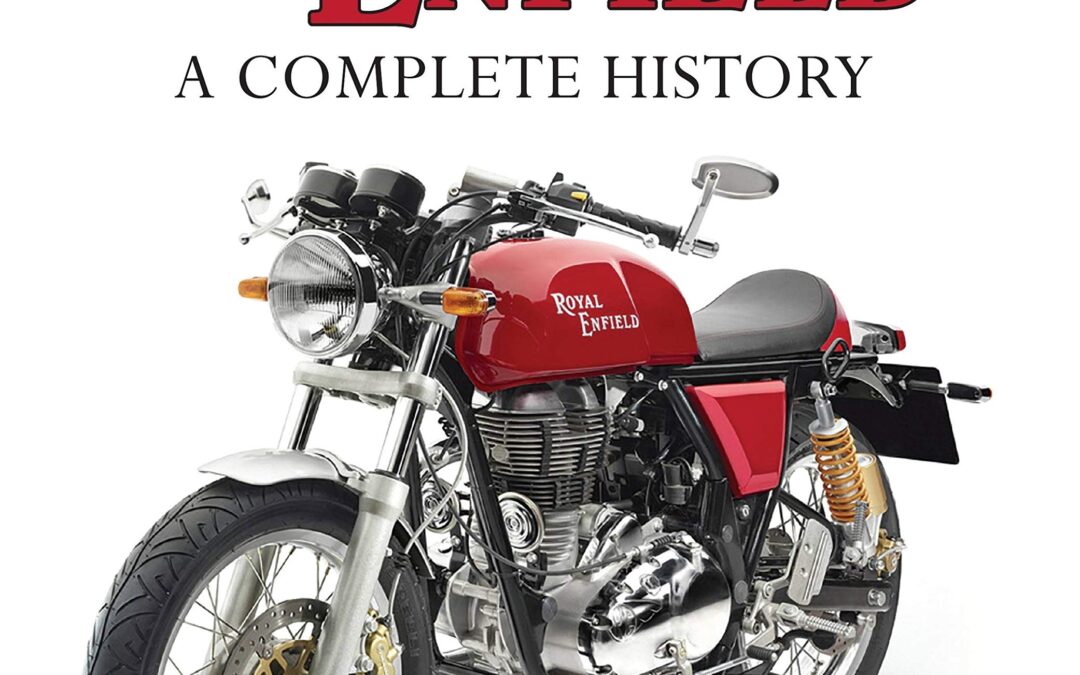
Greg Pullen charts the rise, fall and rise again of Royal Enfield, from the company’s pre-motorcycle beginnings in Redditch, through the impact of the two World Wars, the importance of exports to India and subsequent establishment of factories there, to changes in ownership, recently launched models and new concept bikes for the future.
With 190 photographs, this book includes the V-twins, from the 1930s K and KX range to a glimpse of the concept V-twin shown in 2018; the singles, from 2-strokes to side-valve 4-strokes, and the ohv versions that first used the Bullet name, through to the new singles built in India. The British Bullet: its arrival in 1948 and production in UK, the original orders from India and subsequent setting up of production there are discussed.
The 250s (1958–68), including the Turbo Twins, and the big twins, from the 1948 500 are covered along with the Twin to the final Interceptor in 1970, including the 800cc prototype and the Clymer Indians. The new twins: the 650cc Royal Enfield Interceptor and Continental GT twins and the Bobber concept bike are featured as well as competition success, with notable ISDT achievements, star rider Johnny Brittain and racing the big twins, and Geoff Duke in the GP5.
The British factories and new opportunities with the Indian factories are remembered.







